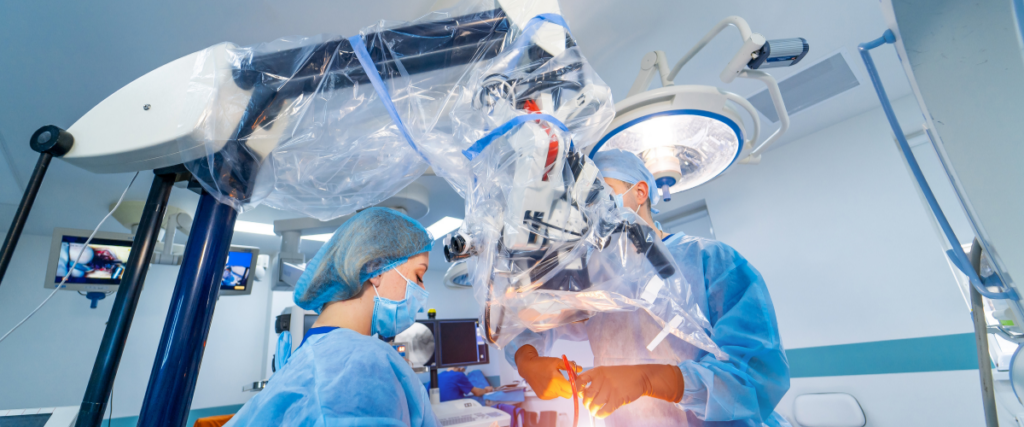Designed to assist doctors and surgeons in the face of staff shortages in the healthcare industry, medical robotics is a rising global technology trend which is expected to reach US$4.54 billion in market revenue by 2026. Read on to learn about the potential applications and future of medical robotics in the Asia Pacific Region.
Global technological developments are creating an impact on various industries, many innovations coming out of the Asia Pacific region. The medical field and healthcare is one such industry. The introduction of medical robotics to assist trained professionals has significantly augmented healthcare, especially in areas that are lacking a skilled workforce.
The market potential of medical robotics is rapidly growing in the APAC region, was estimated at US$1.59 billion in 2021, and is expected to reach US$4.54 billion by 2026. It is not only private businesses making a contribution to the market growth, but also governments who are seeking technological advancements in their own pharmaceutical sectors. This leaves room for more innovations in the coming years, increased accessibility of medical robotics, and increased investment. Read on to learn more about medical robotics and its influence in APAC.

Machines used for robot-assisted surgery may be an already familiar concept, as medical and robotic companies have shifted their focus to their further development since the introduction of the da Vinci Surgical System in 2000. Surgical robots help physicians perform complex procedures with more precision and control in relation to conventional techniques. They are often used in minimally invasive surgery, which involves small incisions, but are also used in common open surgical procedures as well.
According to the International Data Corporation (IDC), robots embedded with artificial intelligence (AI) will be the next phase of medical robotics. With the ability to recognise and analyse patterns, these machines are expected to assist surgeons with pattern-based diagnosis in pathology and radiology.
As the world faces shortages of doctors and other healthcare staff due to the ongoing pandemic, medical robotics will be fundamental for filling these gaps, offering improved services at the same time.
Medical Robotics in APAC
Thailand
Being Asia’s first country to successfully perform a robot-assisted brain surgery in 2017, Thailand is at the forefront of the medical robotics industry in APAC. Earlier this year, Thailand’s Ministry of Science and Technology, Ministry of Public Health, and Ministry of Education jointly set up a committee responsible for the promotion and development of medical innovations.

In 2009, Thailand-based CT Asia Robotics developed a service robot named Dinsow with the vision of it assisting in medical fields as a solution to staff shortages. The company’s Dinsow Mini model is designed to provide care for the elderly and Alzheimer’s patients, responding to commands and encouraging communication to facilitate brain activity.
Bangkok Hospital‘s ROBODOCTOR is another promising medical technology being used in Thailand. A remote presence system, ROBODOCTOR facilitates the prompt treatment of patients, especially in places where specialised medical expertise may not be easy to access.
Singapore
As the world’s second most automated country, Singapore hopes to achieve significant technological developments in various industries, including the medical field. Singaporean Biobot Surgical’s SwabBot features faster and more comfortable Covid-19 swabbing, demonstrating the country’s interest in bringing medical robotics to a global audience.

EndoMaster is another rising medical robotics startup in the country that sets its focus on designing surgical robotic systems related to endoscopy that can reduce surgery time and the need for incisions. The firm has recently developed the first robotic-assisted system that can remove gastro-intestinal tumours endoscopically without surgical incisions.
Australia
The Australian medical robotics market is highly advanced, as the country has been using robotic-assisted minimal access surgery (MAS) for almost 20 years. Australia’s recent introduction of Versius, a surgical robot that is designed to relieve the high physical demand on surgeons using conventional surgical robots, proved and secured the country’s position in the global medical robotics industry.

Founded in 2018, Australian medical technology startup Vexev has developed the world’s first tomographic ultrasound robot (TUR) to make diagnostics more affordable and accessible. With cardiovascular disease being the world’s leading cause of death, the Sydney-based medical company hopes to change the paradigm of cardiology as well as medical diagnostic imaging.
Related Articles
Could AI Robots Perform Brain Surgery? This Taiwanese Company Thinks So.
Cambridge Surgical Robotics Firm Eyes Hong Kong in APAC Expansion





